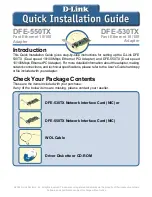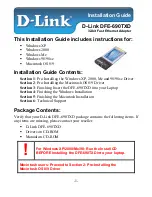
WiSnap User Manual 2.21 04112011-JF
Page
35
of
66
set UART flow 1
It is possible to operate higher baudrates (greater than 115K) without flow control if packets are
uniform and an application protocol is used to ensure that each packet data is delivered on the
remote side before the next packet is sent.
However, given the uncertainty of packet delays in a TCP/IP network and the affects of interference
and retries inherent in wireless networks, flow control is usually required whenever large, contiguous
quantities of data are being written to the UART to guarantee no data is lost.
10.5
Setting GPIO direction, Alternate Functions and Disabling LEDs
The direction of the GPIO can be controlled with the GPIO mask using the
set sys mask <value>
command to set the GPIO pin direction. Value is entered as a hex number. If you need to set only
one bit in the mask you need to read, mask and set the value. Otherwise you will over write any
previous GPIO settings.
The hex value represents a bit mask that controls each pin where 1 = output and 0 = input. For
example,
set sys mask 0x0
sets all pins to input.
To set only GPIO 6 and 7 for example, you would enter
set sys mask 0xc0
The default mask for WiSnap = 0x20f0, which has GPIO 13, 8, 7,6,5,4 as Outputs.
GPIO 0-3 are used internally on the module.
GPIO 4, 5, 6 are LEDs.
GPIO 9 is reserved as the ARM factory reset/ad-hoc mode, (read at power up) and otherwise general
purpose input detect pin.
GPIO 10, 11 are the Uart RX, TX pins and TX does not need to be masked as an output.
GPIO12 is CTS (input) if used.
GPIO13 is RTS (output) if used.
The LEDs on the WiSnap SuRFBoard (M1) are connected to GPIO 4, 5 and 6. To disable the LEDs,
enter
set sys mask 0x20d0
NOTE: The Yellow, Red and Green LEDs can be turned off. The Blue LED on the Surf board
is the power LED and cannot be turned OFF.
The
get sys
command will show the setting of the GPIO mask.
<2.20>
get sys
SleepTmr=0
WakeTmr=0
Trigger=0x1
Autoconn=0
IoFunc=0x0
IoMask=0x21f0
PrintLvl=0x1
















































